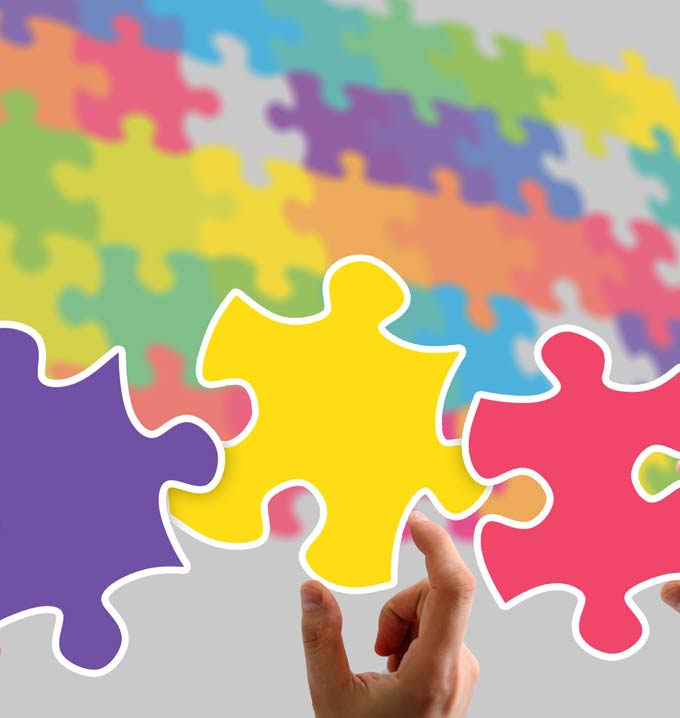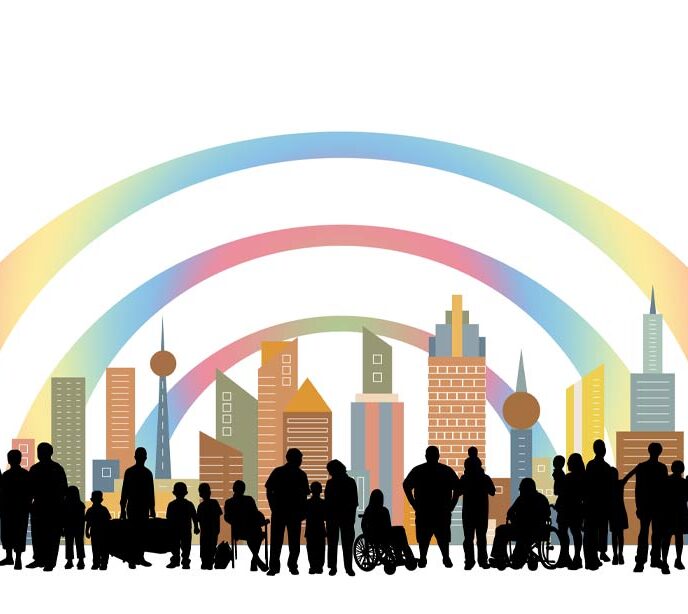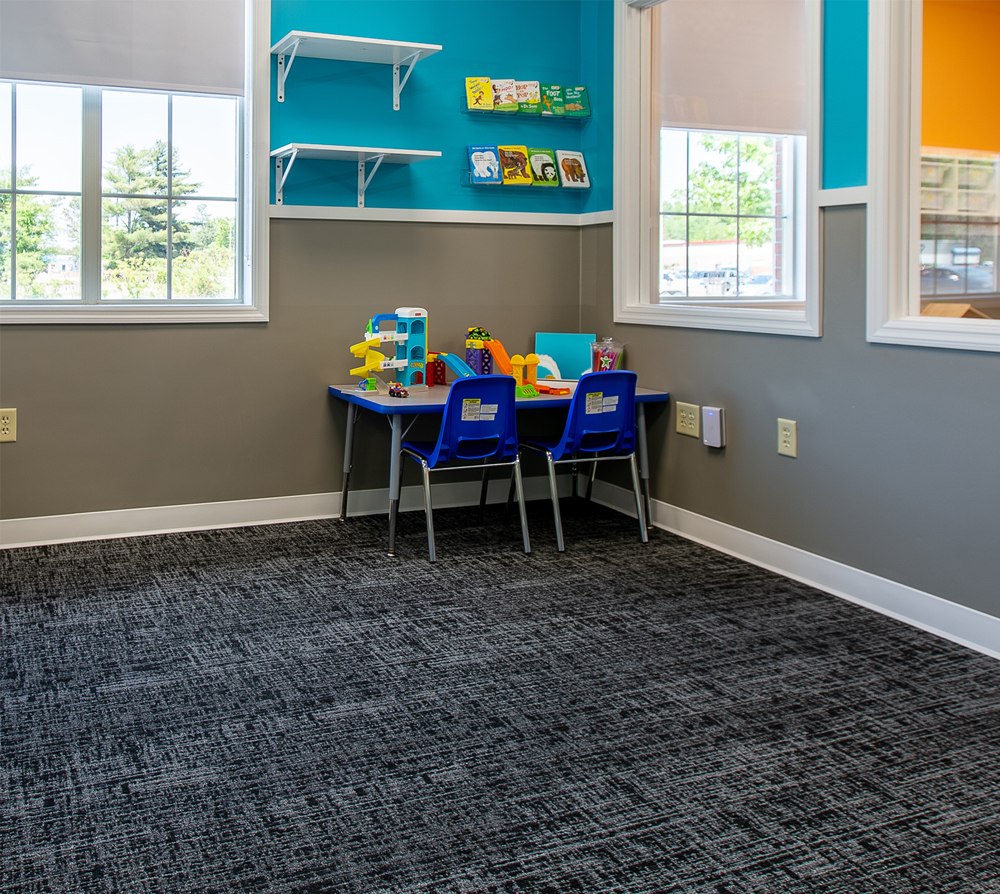Neurodiversity
Neurodiversity appreciates variations in how our brains work, celebrating the unique experiences of individuals beyond supposed “neurotypical” norms. It rejects the idea of “fixing” conditions like autism, ADHD, and dyslexia, understanding them as different ways of being.

Neurodiversity
We’ve heard the term often enough, but what is neurodiversity exactly? A simple definition states that neurodiversity is about appreciating the natural variations in how our brains work and acknowledging the unique experiences of individuals who fall outside what is erroneously termed “neurotypical,” such as those who are autistic, have ADHD, dyslexia, and others. It’s a way of understanding that different neurotypes are just different ways of being rather than something that needs fixing.
Let’s look at where the concept began, explore different types of neurodiversity (also called “neurotypes”), discuss things to look out for, and provide practical tips on how to support and enable neurodivergent people to thrive in broader society.
The origins of neurodiversity
The term “neurodiversity” was coined by Australian sociologist Judy Singer in the late 1990s. Singer proposed that neurological differences should be seen as a form of diversity, similar to other forms of human diversity such as ethnicity, gender, or sexual orientation. The concept gained wider recognition and popularity with the publication of “Neurodiversity: The Birth of an Idea” by journalist Harvey Blume in 1998.
This study catalyzed a broader neurodiversity movement that took its roots from the autism self-advocacy movement, which was prevalent around the same time. Autistic self-advocates began challenging the pathologizing language and treatment approaches that characterized the prevailing understanding of autism. They asserted that autism is a valid identity and advocated for rights, inclusion, and support that respected their unique experiences and strengths.
The neurodiversity movement gained further momentum through the efforts of organizations like the Autism Network International (ANI), founded by Jim Sinclair, and the Autistic Self Advocacy Network (ASAN), founded by Ari Ne’eman. These organizations focused on promoting the rights and self-determination of autistic individuals, challenging stigmatizing narratives, and advocating for accommodations and support that respected autistic experiences.
The core principles of the neurodiversity movement include the following.
1. Acceptance and inclusion
Neurodiversity advocates argue for accepting neurodivergent individuals as valuable members of society and promoting their full inclusion in all aspects of life.
2. Shift from cure to support
Rather than seeking to cure or eliminate neurodivergent traits, the movement shifts the focus to providing the necessary support, accommodations, and resources to enable neurodivergent individuals to thrive and reach their full potential.
3. Respect for autonomy and self-advocacy
The neurodiversity movement recognizes the autonomy and self-advocacy of neurodivergent individuals, valuing their perspectives and inclusion in decision-making processes that affect their lives.
4. Challenging stigma and discrimination
Neurodiversity advocates work to challenge and dismantle the stigma, discrimination, and ableism that neurodivergent individuals face in various aspects of life, including education, employment, healthcare, and social interactions.
Understanding neurodiversity
Neurodiversity is an inclusive framework that encourages society to value and embrace neurological differences. It challenges the notion that there is a single “normal” or “typical” brain and acknowledges that every individual’s neurology is unique. Just as biodiversity is crucial for the health and resilience of ecosystems, neurodiversity is essential for the richness and vitality of human society.
Common types of neurodiversity
Neurodivergence encompasses a wide range of neurological differences and conditions. Neurodiversity acknowledges that while behaviors listed here are interpreted as disorders in neurotypical conditions, they do not reflect the true capacity of neurodivergent people who thrive in conducive and enabling environments. Here are some of the most commonly recognized types of neurodiversity.
Autism Spectrum Disorder (ASD)
Many people ask, “Is autism a neurodiversity?” The simple answer is no, it is a form of neurodivergence.
Autism is a neurodevelopmental condition characterized by differences in social communication, sensory processing, and repetitive behaviors. Autistic people may have varying strengths and challenges, and their experiences can range from mild to severe.
Attention Deficit Hyperactivity Disorder (ADHD)
ADHD is a neurodevelopmental condition broadly defined by difficulties with regulating focus, managing impulsivity, and perceived hyperactivity. Individuals with ADHD may struggle with meeting organizational requirements, experience time blindness, and sustained or hyper focus in mainstream environments and situations.
Dyslexia
Dyslexia is a learning difference that affects reading, writing, and language processing. Individuals with dyslexia may have difficulty with letter recognition, decoding words, and spelling, despite having normal intelligence.
Dyspraxia
Dyspraxia, also known as developmental coordination disorder, involves challenges with motor coordination and planning. Individuals with dyspraxia may have difficulty with fine and gross motor skills, coordination, and spatial awareness.
Tourette Syndrome
Tourette Syndrome is a neurodevelopmental disorder characterized by involuntary motor and vocal tics. These tics can vary in frequency and severity, and individuals may also experience associated conditions like obsessive-compulsive disorder (OCD).
Anxiety Disorder
Anxiety disorder is a mental health condition characterized by excessive and persistent worry, fear, and unease. It involves intense and sustained feelings of apprehension that can interfere with daily life and well-being..)
Less common types of neurodiversity
While some of these may be household terms popularized by memes, social media, and popular culture, they are not as pervasive as you might think.
Dyscalculia
Dyscalculia, also known as Developmental Dyscalculia (DD), is a specific learning disorder that involves difficulties in learning basic arithmetic facts, processing numbers, and performing accurate and fluent calculations.
Dysgraphia
Dysgraphia is a specific learning disability that primarily affects written expression. Individuals with dysgraphia often struggle with spelling, exhibit poor handwriting, and find it challenging to translate their thoughts onto paper. Dysgraphia can manifest as a language-based or non-language-based disorder.
Meares-Irlen Syndrome
Meares-Irlen Syndrome, also known as Irlen Syndrome, Scotopic Sensitivity Syndrome, or Visual Stress, is a perceptual processing disorder. Unlike an optical issue, it involves difficulties in the brain’s ability to process visual information accurately.
Hyperlexia
Hyperlexia is characterized by precocious and self-taught reading ability in children under the age of 5, along with a heightened fascination for letters, numbers, logos, maps, or visual patterns.
Obsessive-Compulsive Disorder (OCD)
Obsessive-Compulsive Disorder (OCD) is a prevalent mental health condition characterized by persistent, intrusive thoughts known as obsessions and repetitive behaviors or rituals called compulsions.
Synesthesia
Synesthesia is a perceptual phenomenon where stimulation of one sensory or cognitive pathway, like sounds or taste, triggers involuntary experiences in another, like color, resulting in the blending or mixing of senses. This can extend to the blending of letters and shapes into each other.
Indicators of neurodivergence
While each neurodivergent condition has its unique set of characteristics, there are some common indicators of neurodivergence that individuals may face.
Sensory sensitivities
Many neurodivergent individuals have heightened or diminished sensory sensitivities. They may experience hypersensitivity or hyposensitivity to stimuli such as sounds, lights, textures, or tastes, which can affect their daily lives and interactions.
Communication differences
Neurodivergent individuals may experience challenges in social communication and non-verbal cues. They may have difficulty understanding social norms, maintaining eye contact, interpreting facial expressions, or understanding others’ perspectives.
Executive functioning challenges
Executive functions encompass cognitive processes like planning, organization, time management, and impulse control. Neurodivergent individuals may struggle with one or more of these functions, affecting their ability to prioritize tasks, stay organized, and regulate their behavior.
Special interests and hyperfocus
Many neurodivergent individuals develop intense interests or passions in specific subjects. These interests often involve in-depth knowledge and dedication, becoming a source of motivation and enjoyment for the individual.
Supporting neurodivergent people
Creating an inclusive and supportive environment for neurodivergent people is crucial. Here are some practical tips on how to support and foster inclusion.
Education and awareness
Educate yourself and others about neurodiversity. Learn about the specific challenges and strengths associated with different neurodivergent conditions. Neurodiversity awareness and knowledge will help dispel misconceptions and foster understanding.
Person-centered approach
Recognize that every neurodivergent individual is unique. Focus on their strengths, talents, and interests rather than solely on their challenges. Adopt a person-centered approach that emphasizes individual needs, accommodations, and support.
Open communication
Foster open and honest communication with neurodivergent individuals. Listen to their perspectives and experiences, and provide a safe space for them to express their thoughts and feelings. Validate their experiences and work together to find solutions and support.
Sensory-friendly environments
Create sensory-friendly environments that accommodate the sensory needs of neurodivergent individuals. This can include providing quiet spaces, reducing visual clutter, using soft lighting, and allowing for flexibility in sensory experiences.
Accommodations and support
Offer accommodations and support that cater to individual needs. This may include visual aids, assistive technologies, flexible schedules, clear instructions, and additional time for tasks or transitions.
Inclusive education and employment
Advocate for inclusive education and employment practices that embrace neurodiversity. Promote environments that value diverse learning styles, provide appropriate support, and foster inclusive interactions.
Promote acceptance and empathy
Foster a culture of acceptance and empathy by promoting understanding, tolerance, and respect for neurodivergent individuals. Encourage neurotypical individuals to learn from and appreciate the unique perspectives and contributions of their neurodivergent peers.
Celebrate neurodiversity with Lighthouse Autism Center (LAC)
At Lighthouse Autism Center, we understand and support neurodiversity and strive to create an inclusive and compassionate society. Our vast archive of autism resources, combined with our innovative Lighthouse Fusion ABA therapy, forms a formidable arsenal for autistic children to thrive in a society still learning to accept neurodiversity.
Together, we can unlock your child’s potential
Related News

06/11/2025
Overcoming Stereotypes
Autism stereotypes are common and can have significant social consequences for autistic children. Misconceptions hinder the acceptance and inclusion of autistic children. Challenging these stereotypes is vital for creating a more understanding and supportive society. Challenging Common Autism Stereotypes When people hear the word “autism,” they often imagine a narrow set of images, like the […]

06/11/2025
What’s Next After ABA Therapy?
There are a number of reasons why an autistic child might stop ABA therapy, and one is that they have reached their goals. In this article, we take a look at what parents can expect going forward. What Are the Next Steps After ABA Therapy? As a parent, you only want what’s best for your […]

06/11/2025
Do Babies with Autism Smile?
We take a look at the importance of early intervention, some of the milestones for parents to look out for, and the more common signs of autism in babies. Do Babies with Autism Smile? Watching your baby grow is an exciting time, certainly one of life’s quiet wonders. From those first sleepy stretches to the […]


